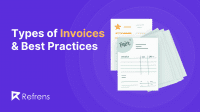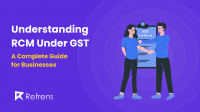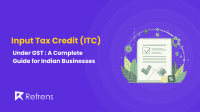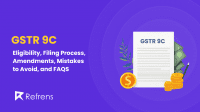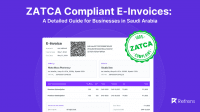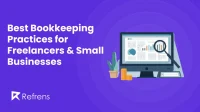Anjali, 35, is a seasoned professional with 11 and a half years of work experience. She works as a content strategist and writer in Delhi, India. She decided to try freelancing last year because she wanted to experience the creator’s economy. After 1 year of working in the field, she claims that a full-time job requires you to work the mundane way too often, in contradiction to freelancing, which lets you pursue the project you desire. Although, her average income of the month has drastically decreased as compared to when she was a salaried employee.
So, what led to this substantial decrease in income? Is it just the lack of projects or missing financial planning that affected the outcome? In our experience, just a little bit of financial planning for a newbie freelancer can go a long way in dealing with the irregular income stream.
Over 58 million people work as independent contractors around the globe. While the freedom and flexibility of being self-employed may appear appealing, the variable income can be challenging to manage at times.
As a result, you must organize your finances differently from those who are salaried. With no employer-provided benefits, it is entirely up to you to ensure your future. The steps below will guide you through intelligent financial strategies.
Financial Tips For Freelancers

1. Build a Rainy Day Fund
Prioritize emergencies. When people make more money, they tend to spend more and save less for rainy days.
It is ideal for self-employed people to save a year’s worth of income as a contingency fund. It should cover not only family costs but also fixed expenses.
Moreover, the money you make in a month should be invested according to your asset allocation strategy based on your goals. Liquid and debt funds will be helpful for immediate demands and medium-term ambitions such as home purchases.
In addition to that, make a cash-flow statement to manage your liquidity better. A basic excel sheet can be used. To begin with, make a list of all of the clients for whom you work and the payments you expect from them. Then, for each month, write down your estimated expenses. This can help you better understand your cash flow picture and help you save and spend wisely.
2. Creating a Budget: 50/30/20 Rule
The first step is to keep a budget. Make three categories of your earnings: needs, wants, and savings. Especially with intermittent wages, creating a budget plan will help you save money. It helps you cover all of your expenses while leaving you with cash to save or invest.
The holy grail of budgeting is to follow the 50/30/20 guideline.
First, figure out what fixed costs you’ll need. Food, essential utilities, housing, transportation, life or dog insurance, child care, minimum loan repayments, and so on are all included. This should account for 50% of your earnings.
Calculate your savings goals, retirement fund, and debt repayments; these expenses should account for 20% of your income.
This leaves you with 30% of your income to spend on things you desire, such as entertainment, lunches, and vacations, without feeling guilty.
Therefore, remember the 50/30/20 Rule as one of the most effective budgeting strategies.
3. Make Insurance a Top Priority
One advantage of regular employment is that employees receive life and health insurance from their employers.
However, when you freelance, you must ensure that your insurance coverage is sufficient for you and your family.
The insurance coverage for people in the 20–30 age range should be roughly 20 times their yearly income; for those in the 30–40 age range, it should be approximately 15 times; and for those in the 40–50 age range, it should be roughly ten times.
Additionally, carefully consider your payment options because freelancers’ incomes frequently fluctuate.
4. Make Income Boosters
Irregular income earners should create fallback income generators. While the emergency fund will cover one end of the bill if your income is insufficient in the short term, having a second source of income will give you more stability. Then create income-generating assets. For instance, interest-bearing assets, dividend-bearing investments, or rental-income-producing real estate. You could also increase your revenue by using automation services such as digital pet management software for income-producing property.
Try to diversify your income sources by working with various clients so that if one client goes away, you still have others to fall back on. To get additional clients, broaden your skill set. Additionally, sign a contract with your clients to ensure more consistent work and income.
Analyze the different side-hustles you can do to increase your income.
Recommended Reads: E-invoicing In GST: A Complete Guide
5. Check on Your Retirement Savings
In the absence of retirement benefits, you must invest a portion of your salary towards retirement as a self-employed individual. Invest in PPFs, NPSs, or equity-oriented schemes.
Most people shouldn’t have too much trouble saving 10% of their income and allocating it to debt repayment or retirement such as gold IRA providers. The saying goes, “If you can’t live on 90% of your income, you can’t live on 100% of your income.”
Finally, examine your goals and cash flows every quarter to ensure that any surplus funds are invested in these buckets dedicated to your objectives.
6. Pay Your Tax on Time
When you have a full-time job, your paycheck is free to be spent since taxes have already been taken out. For independent contractors, that is not the case.
Therefore, freelancers must budget and save enough money to cover their tax obligations. One should also create reserves to cover significant projects that increase income and tax obligations.
Moreover, the experts advise independent contractors to use all available tax breaks and exclusions to reduce their tax liability.
Check out the top tax tips for a freelancer in this blog!
7. Don’t Mix Your Personal And Business Accounts
Organize your spending by keeping your freelance budget distinct from your personal budget. Separating business and personal expenses will not only be helpful at tax time, but it will also help you see how much you are spending on your business. To clarify the distinction between professional and personal spending, try putting all your business costs on a different card or account.
8. Utilize The Tools At Your Disposal
Since the responsibility for handling your funds rests on your shoulders as a freelancer, you’ll need to ensure you have all the resources you need. Apps can assist you in juggling your obligations—including invoicing, taxes, and other duties—in a stress-free manner. You might track and simplify your job with software like Refrens, Mint, Paymo, and many more.
9. Seek Long-Term Work
While side-hustles projects are fantastic for bringing in extra money and larger lump sum payouts, making sale after sale all the time to keep afloat can be challenging and exhausting. So, ask the folks you’ve already worked with for more work. Just because a project has been completed does not indicate that they will not have any other ongoing projects for you to work on. By doing this, you can continue to work with someone with whom you already get along well. Hence, leads to long-term projects.
Read more: Top Invoicing Software For Consultants
To Sum Up
Feeling overwhelmed after reading about the financial management you neglected for so long or didn’t engage in, just like Anjali? There is never a wrong time to start, so relax.
Finance is an area of life where rash judgments can cost you a lot of money. Financial planning is crucial, and all of the suggestions above must be followed.
Since you don’t have an institute to fall back on, being self-employed and a freelancer comes with additional duties. You may continue to be your boss without fear if you have a solid financial plan.
Recommended Reads: Top 7 Invoice Generator Software


